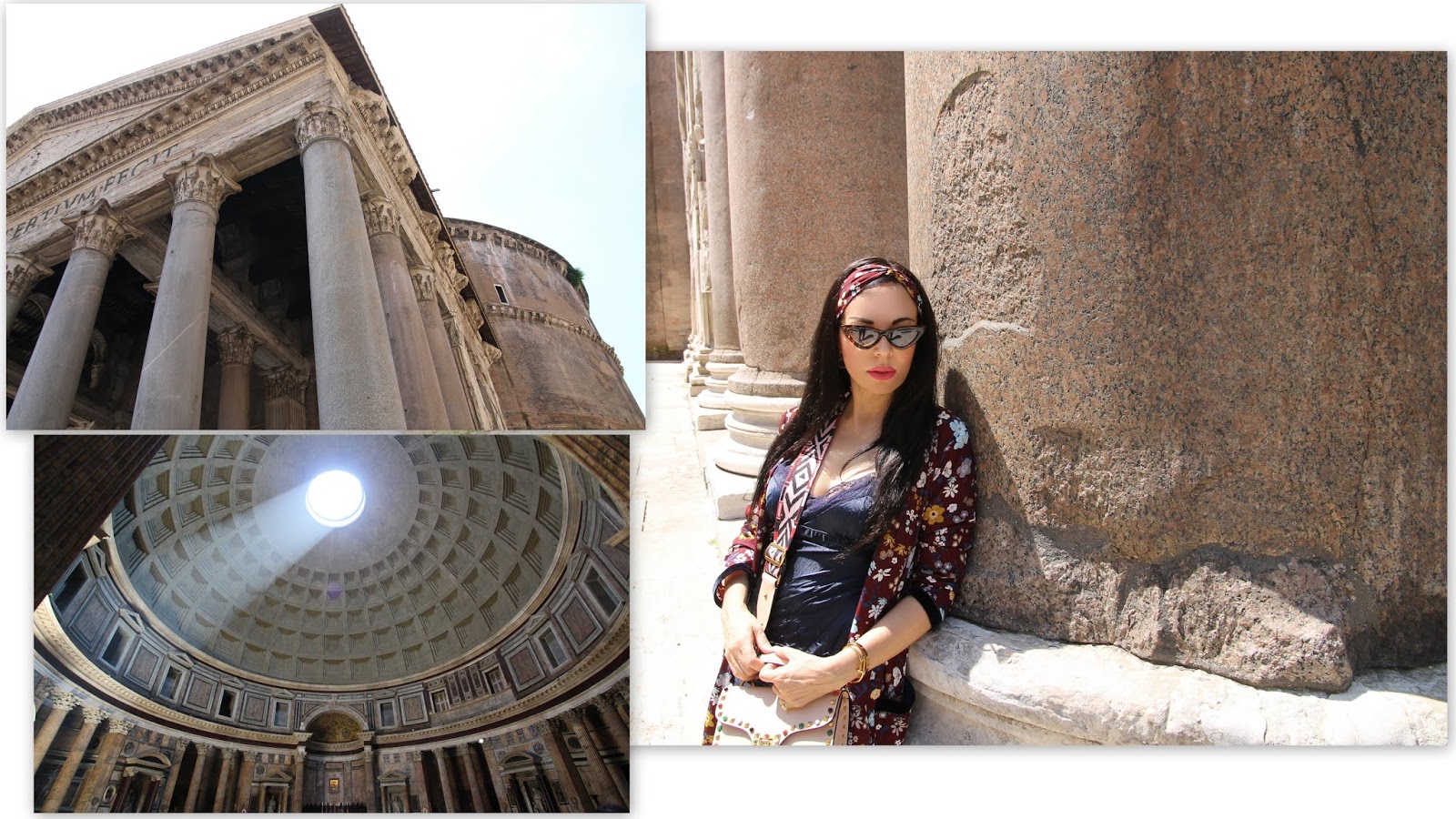
Rinchiuso in un labirinto di strette stradine, si erge uno degli
edifici più rinomati della storia dell’architettura.
edifici più rinomati della storia dell’architettura.
L’Italia è già di per sé un effetto speciale, ma il Pantheon a Roma, la dimora dedicata al culto di tutti gli dei (Pan- tutti Theon- divinità), mette i brividi.
Viviamo in un’epoca di tecnologie incredibili, e tuttavia non sappiamo
come riprodurre costruzioni simili.
come riprodurre costruzioni simili.
Edificato al culmine della potenza e della ricchezza dell’Impero Romano, il
Pantheon è stato lodato e studiato sia per l’immensità della sua
cupola che per la geometria perfetta per oltre due millenni.
Pantheon è stato lodato e studiato sia per l’immensità della sua
cupola che per la geometria perfetta per oltre due millenni.
Durante
questo periodo è stato oggetto di innumerevoli imitazioni e riferimenti
come grandiosa eredità architettonica, perfettamente conservata, di una delle epoche più influenti
del mondo.
questo periodo è stato oggetto di innumerevoli imitazioni e riferimenti
come grandiosa eredità architettonica, perfettamente conservata, di una delle epoche più influenti
del mondo.
Sorge in piazza della Rotonda, ornata di una bella fontana
cinquecentesca, di Giacomo Della Porta, sormontata da un antico obelisco
egizio.
cinquecentesca, di Giacomo Della Porta, sormontata da un antico obelisco
egizio.
Fu costruito dal’’imperatore Adriano tra il 118 e il 125 d.c. sui resti
di un precedente tempio del 27 a.c. di cui porta ancora la grande iscrizione in latino con lettere di bronzo, “M.AGRIPPA.L.F.COS.TERTIVM.FECIT” – “Marco Agrippa, figlio di Lucio, console per la
terza volta, edificò”.
di un precedente tempio del 27 a.c. di cui porta ancora la grande iscrizione in latino con lettere di bronzo, “M.AGRIPPA.L.F.COS.TERTIVM.FECIT” – “Marco Agrippa, figlio di Lucio, console per la
terza volta, edificò”.
Appena entri e alzi gli occhi al cielo, un fascio di sole cattura la tua attenzione, uno spettacolare raggio di luce filtra obliquo
attraverso l’oculus, l’apertura circolare larga 9 metri sulla sommità della cupola, illuminando l’intero edificio.
attraverso l’oculus, l’apertura circolare larga 9 metri sulla sommità della cupola, illuminando l’intero edificio.
Uno spettacolo unico, che celebra lo stretto legame fra questo capolavoro architettonico ed il cielo, dimora di tutti gli dei.
In caso di pioggia potrai osservare l’acqua che cade giù prima di sparire nei 22 fori di drenaggio quasi invisibili del pavimento. L’apertura crea un “effetto camino”, una corrente
d’aria ascensionale che porta alla frantumazione delle gocce d’acqua.
Così, anche quando la pioggia fuori è battente, la sensazione è che
all’interno piova meno.
In caso di pioggia potrai osservare l’acqua che cade giù prima di sparire nei 22 fori di drenaggio quasi invisibili del pavimento. L’apertura crea un “effetto camino”, una corrente
d’aria ascensionale che porta alla frantumazione delle gocce d’acqua.
Così, anche quando la pioggia fuori è battente, la sensazione è che
all’interno piova meno.
Visitarlo oggi è quasi come essere trasportati indietro
nel tempo, esattamente all’Impero Romano.
nel tempo, esattamente all’Impero Romano.
Indosso un kimono, la vestaglia preziosa che profuma d’oriente, la giacca più nuova per le mezze stagioni da preferire al solito blazer, mentre ammiro questa meraviglia architettonica e ne percepisco, in maniera tangibile, tutto il potere della sua geometria.
Locked within Rome’s labyrinthine maze of narrow streets stands one of the most renowned buildings in the history of architecture.
Built at the height of the Roman Empire’s power and wealth, the Roman Pantheon has been both lauded and studied for both the immensity of its dome and its celestial geometry for over two millennia.
During this time it has been the subject of countless imitations and references as the enduring architectural legacy of one of the world’s most influential epochs.
Seemingly impervious to time or destruction, the walls and dome of the Roman Pantheon rise from Piazza della Rotonda, and bath the square in a warm, protecting light.
The Roman Pantheon probably doesn’t make popular shortlists of the world’s architectural icons, but it should: it is one of the most imitated buildings in history, one of the architectural masterpieces of the Italian capital.
The construction of the current Pantheon was carried out during the reign of Hadrian, in the year 126 A.D. The name of Agrippa comes from the place in which the current building is built, which was previously occupied by the Pantheon of Agrippa, built in the year 27 B.C and that was destroyed in a fire in the year 80 A.D.
At the beginning of the 7th century the building was donated to the Pope Boniface IV, who transformed it into a church, in which function it currently finds itself in a perfect state of preservation.
The most surprising aspect of the architecture in the Pantheon is its measurements: the circular building has exactly the same diameter as its height: 43.5 metres.
The construction of the current Pantheon was carried out during the reign of Hadrian, in the year 126 A.D. The name of Agrippa comes from the place in which the current building is built, which was previously occupied by the Pantheon of Agrippa, built in the year 27 B.C and that was destroyed in a fire in the year 80 A.D.
At the beginning of the 7th century the building was donated to the Pope Boniface IV, who transformed it into a church, in which function it currently finds itself in a perfect state of preservation.
The most surprising aspect of the architecture in the Pantheon is its measurements: the circular building has exactly the same diameter as its height: 43.5 metres.
The dome, which has the same diameter, is bigger than that of St. Peter’s Basilica. At its top, a 9 meter diameter opening, a surprising oculus, allows natural light to illuminate the entire building.
The rectangular facade that hides the enormous dome is comprised of 16 granite columns which are each 14 meters in height, on which the following inscription can be seen: “M.AGRIPPA.L.F.COS.TERTIVM.FECIT”, which means “Marcus Agrippa, son of Lucius, built this temple when he was a Consul.”
The rectangular facade that hides the enormous dome is comprised of 16 granite columns which are each 14 meters in height, on which the following inscription can be seen: “M.AGRIPPA.L.F.COS.TERTIVM.FECIT”, which means “Marcus Agrippa, son of Lucius, built this temple when he was a Consul.”
To visit it today is to be almost transported back to the Roman Empire itself.
I’m wearing a kimono,
the precious dressing gown that smells of the East, the newest jacket
for this fall to be preferred to the usual blazer, while I admire
this architectural wonder and I feel the tangible power of its geometry.
the precious dressing gown that smells of the East, the newest jacket
for this fall to be preferred to the usual blazer, while I admire
this architectural wonder and I feel the tangible power of its geometry.
Location: The Pantheon of Agrippa – Rome – Italy



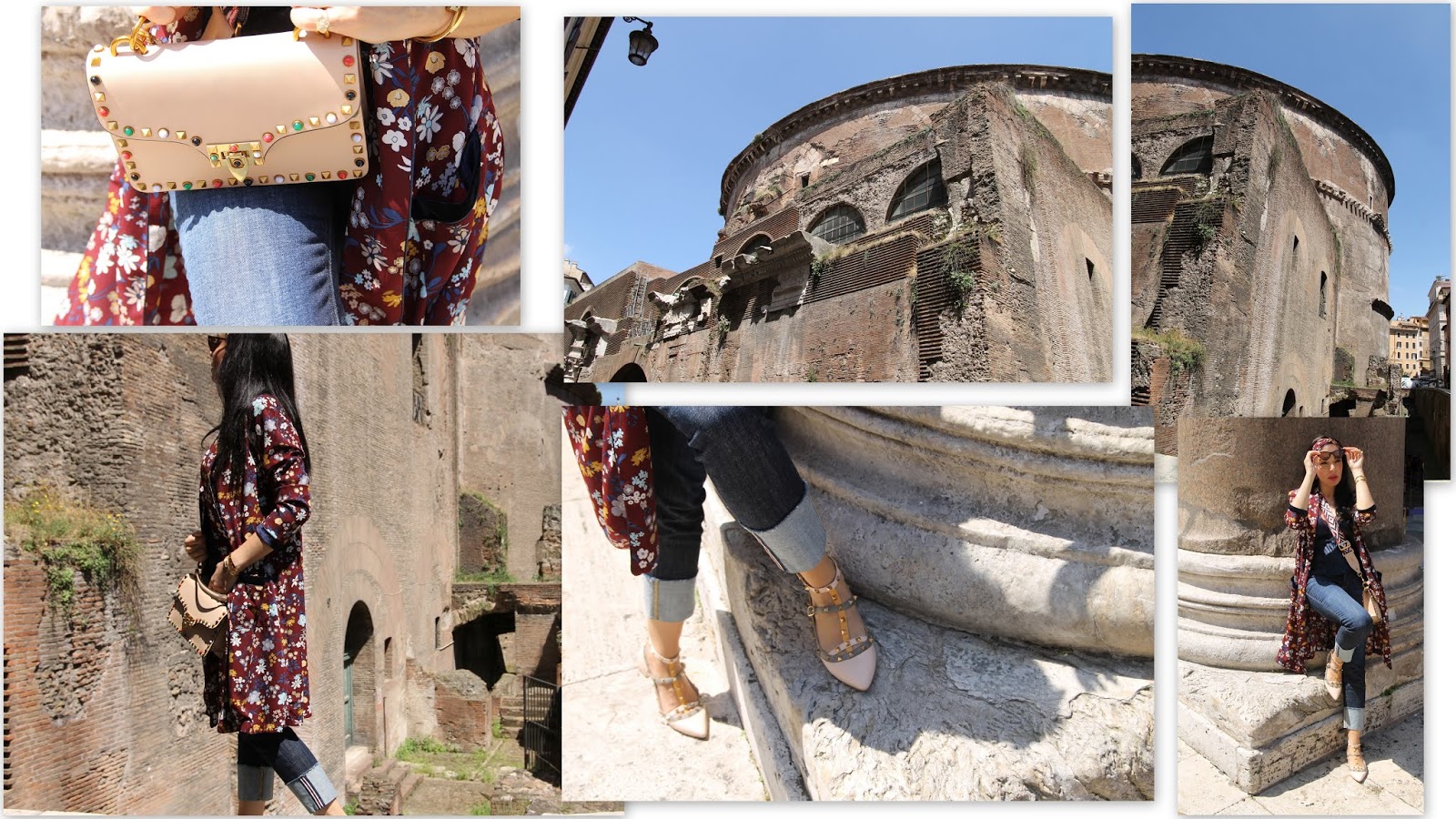

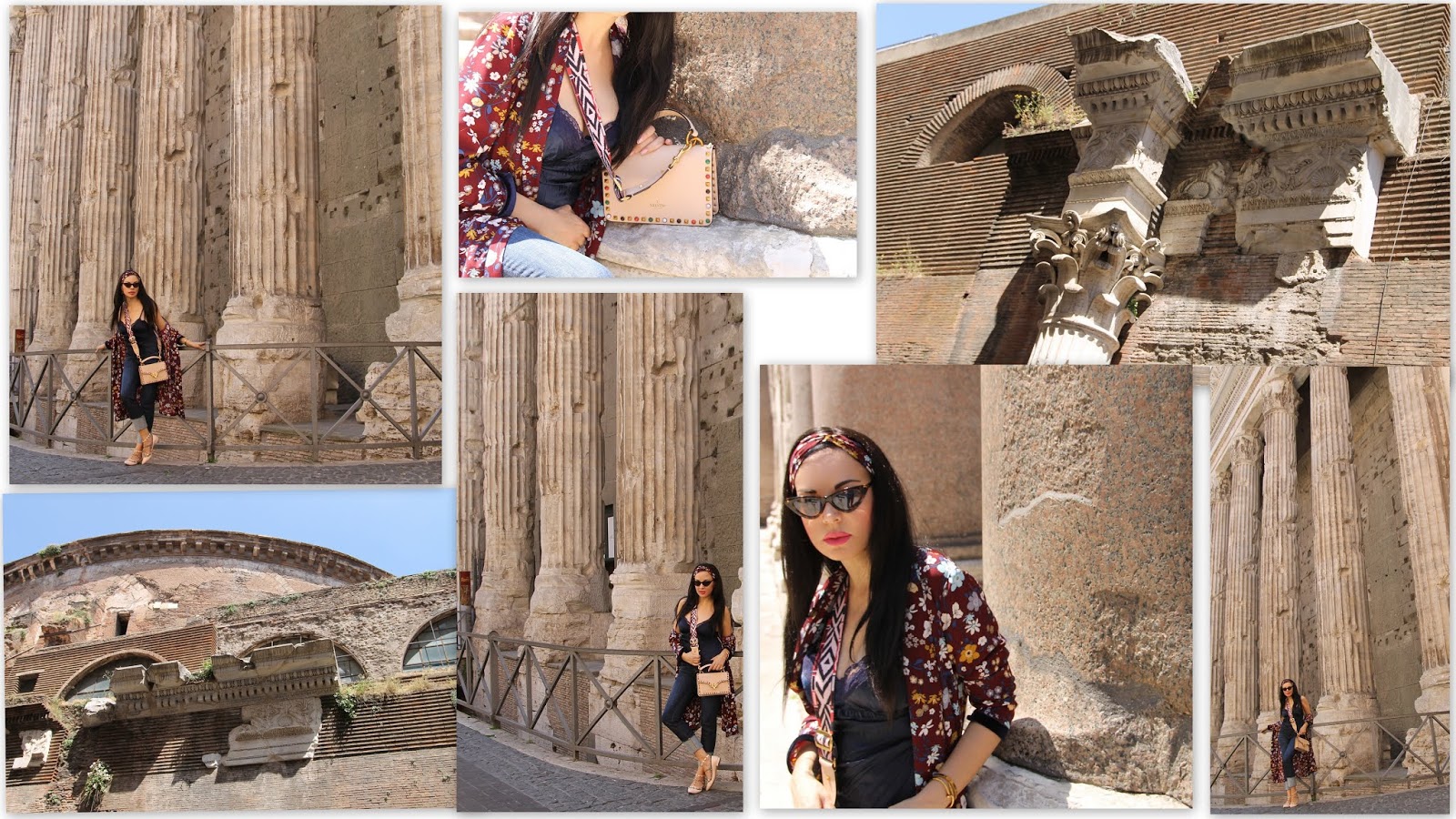

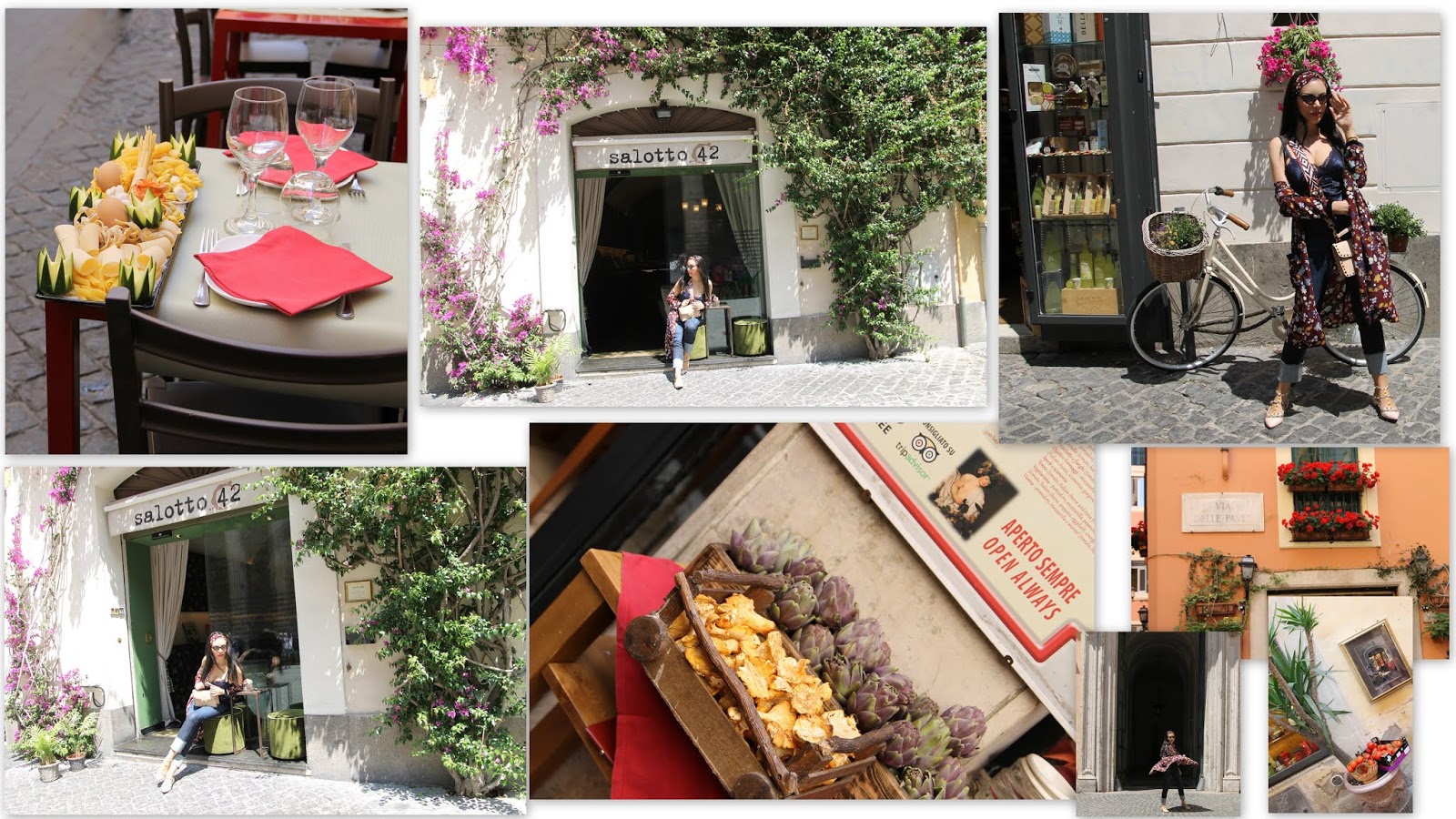

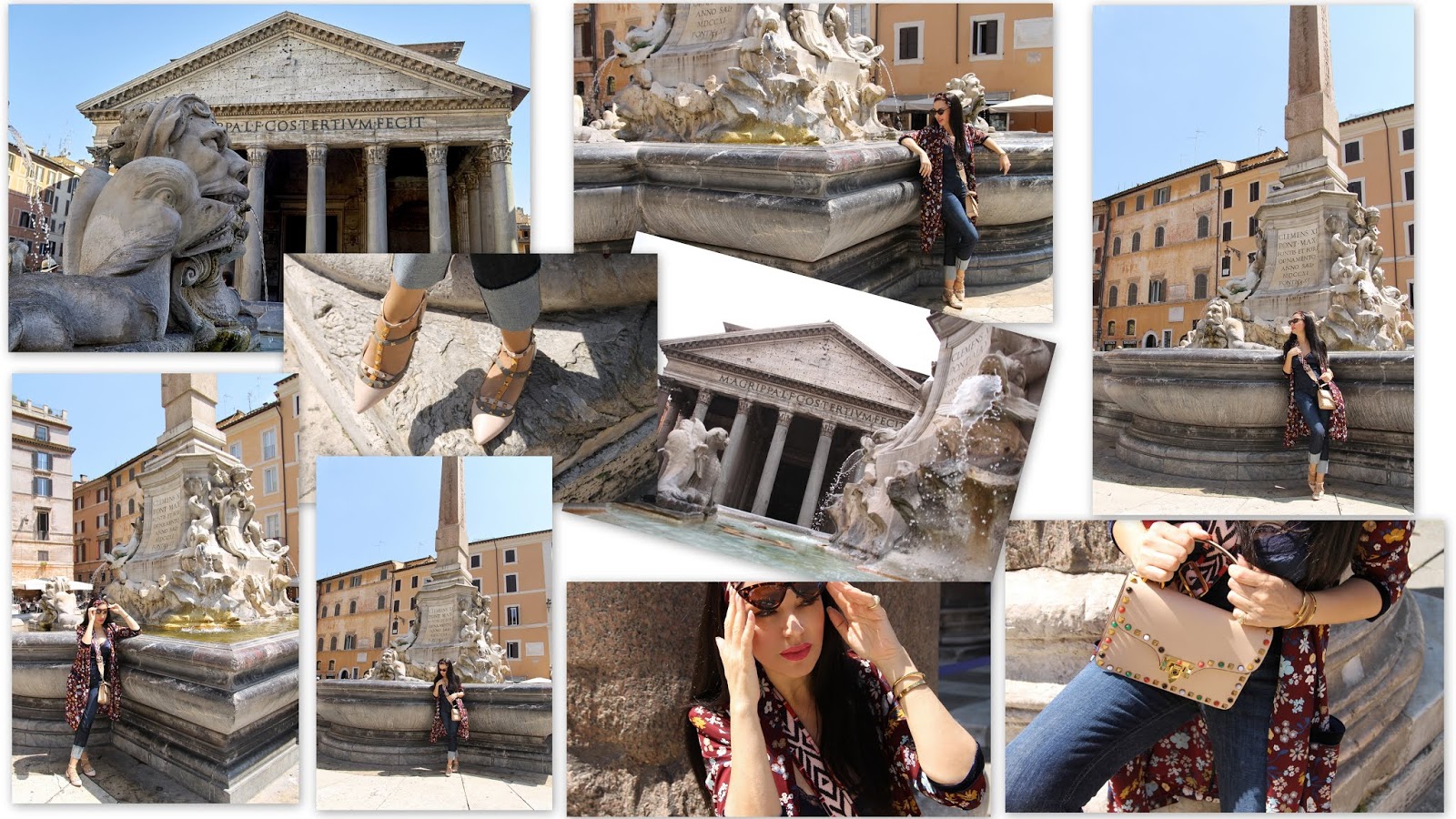
Photos: James Aliberti
I was wearing:
Eiki kimono
Dolce & Gabbana top
Sportmax jeans



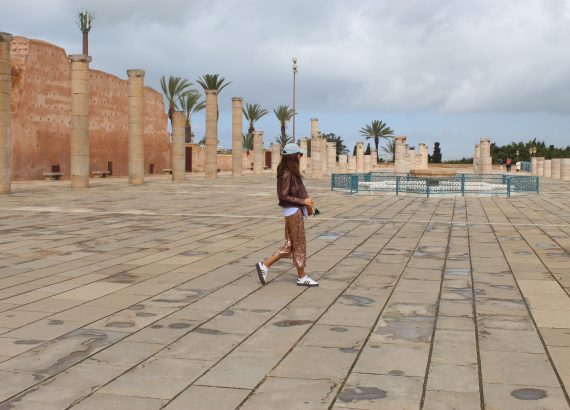
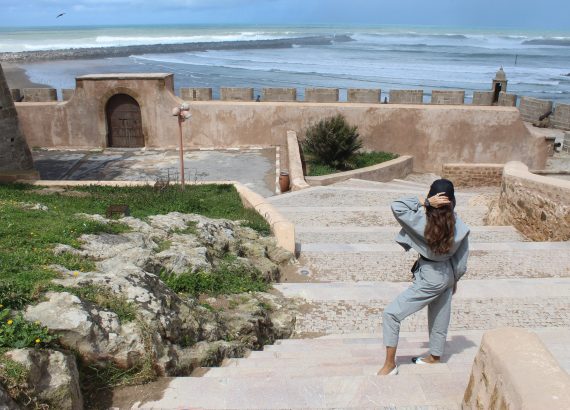
the beauty of history and the beauty of woman together… great photos..
Have a nice week, my dear friend..
Loving your kimono.
http://www.amysfashionblog.com/blog-home/
Oh wow, it is an incredible place. Your pictures are so stunning! And I love what you wore as well. That print is fabulous!
the-creationofbeauty.blogspot.com
Troppo chic il kimono 🙂
Carmy
From Amazing architecture to amazing outfit and accessories Love it all babe I am in love with that bag so gorgeous Have a wonderful week xoxo Cris
https://photosbycris.blogspot.com/2018/10/yoga-diet-and-fashion-three-key.html
Great content and love your thoughts on this post
💗💗Love your post and thank you so much💗💗
Hope you had an amazing week!!
I am glad you enjoyed reading my recent posts and thank you!!
Harija Ravi
The Pantheon is such an architectural wonder! Thanks for showing us around.
Rome is an amazing city. It's so wonderful!
Love so much your kimono. Its print is stunning!
xx
http://www.mybeautrip.com
Roma è sempre Roma!! E tu sei sempre splendida, quel kimoni è bellissimo e la borsa si commenta da sola!
Un bacio! 💕 F.
La Civetta Stilosa
amazing photos! really beautyfull!
kisses from Poland :*
What a fun-filled trip, dear! xoxo
Absolute stunning photos – love your shoes !
http://www.pink-purpledots.blogspot.com
Your kimono looks fantastic dear Paola and I really love it how you have styled it with the denims!
xx Rena
http://www.dressedwithsoul.com
Amazing places you take pictures at. Always looking bellisima with outstanding outfits.
Great post!
Mi rievoca tanti bei ricordi di quando da bambina visitai Roma, è favoloso. Ed anche tu sei bellissima Paola, mi piace un sacco il kimono!:*
Foto spettacolari e look strepitoso, quel kimono mi strapiace!!! Baci
Fashion and Cookies – fashion and beauty blog
Grazie Vale, buon inizio settimana!
Un post da visitare *_* tu bellissima , amo questo kimono.
La tua borsa è stupenda, come te del resto!
http://www.glitterchampagne.com
Mi piace tantissimo questo outfit e lo vedo perfetto anche x me ^_^
Roma è Roma… Che belle le tue scarpe e la borsa! Tu splendida come sempre. Un bacio!
https://chicchedimamma.com/
Ogni volta mi viene in mente una sola frase: sei stupenda!!!bellissimi scatti davvero!kiss
https://chiaradipalma92.blogspot.com/
Some wonderful pictures.. Rome is such a great city.
http://www.henatayeb.blogspot.com
Wow!! This is so amazing, babe!
Happy Monday, babe!
xoxo, Vanessa
http://www.WhatWouldVWear.com
You look so classy. Love the bag! Have a great week! xx
This is such a beautiful bag. You look lovely.
Ciao Paola, che bello vedere questo foto che hai scattato nella mia città 🙂
Check out my latest blog post if you want:
A TOUR AT UFFIZI GALLERY IN FLORENCE | MY EXPERIENCE WITH THE ROMAN GUY TOUR COMPANY
—-> https://evaredson.blogspot.com/2018/10/a-tour-at-uffizi-gallery-in-florence-my.html
xx, Eva
Mi piace tantissimo questa tua interpretazione della vestaglia. Look fantastico!
Nuovo post “#viaggiareconibambini quarta tappa Sassi di Matera” ora su http://www.littlefairyfashion.com
How could you travel to these amazing locations all the time?! I am so jealous :)))
You look gorgeous as always!
– Marina W
https://waitmarinawho.blogspot.com/2018/10/labels-judgement-and-prejudice.html
Nice kimono!
https://the-fight-for-a-dream.blogspot.com
Che meraviglia Roma!😍 E il tuo outfit è stupendo!💖
estás preciosa hoyl!!!!! feliz día! un besazo! te espero en mi blog
http://www.ShoesAndBasics.com
Love.
Stunning here, babe! Love this!
-Ashley
Le Stylo Rouge
Great and chic casual outfit Paola. Your bag is wonderful.
http://missymayification.co.uk
You look beautiful in all of your outfit photos taken at the Pantheon of Rome.
Your floral print kimono, lacy black Dolce + Gabbana top and blue denim Sportmax jeans all look very attractive being worn by you.
https://full-brief-panties.blogspot.com/
Buona serata 🙂
Carmy
Flawless look and your outfit is stunning! Love the kimono, the print is perfect for Fall.
http://www.busyandfab.com
Last week I was learning about Roman art and architecture in my Art History class – it is such a beautiful place with so much history behind it. Thanks for sharing! I love your photos, as well! 🙂
melissakacar.blogspot.com
You are so beautiful in Rome!
That kimono coat and Valentino bag are so great combination!!
akiko
http://www.akikohiramatsu.com
Amo Roma – che bella citta secondo me 🙂 Come sempre tu sei bella e mi piace molto il tuo outfit
bacci xx
Great post my blogger friend.
Have a nice day .
Dilek…
Rome looks like a great place to visit! Love your kimono!
Such a wonderful place and amazing pictures! I also like your outfit!
jointyicroissanty
It's amazing what a distant history remember these buildings.
Rome is such an amazing city…
xx
Eli
http://www.curly-style.com
I agree that this architecture is really beautiful and I wish I had taken more pictures when I visited. You look beautiful with the floral print. The purse is perfect! Have a lovely week!
-PerlaGiselle | iamperlita.com
Say hello and let’s follow each other <3 | INSTAGRAM
Very pretty look for a roam around the city! I like the cute kimono and Valentino duo.
Happy day Paola!
http://www.fashionradi.com
That Valentino bag is gorgeous ! WOW !!
http://www.pink-purpledots.blogspot.com
You look awesome! Have a lovely day!
https://leraseyo.blogspot.com